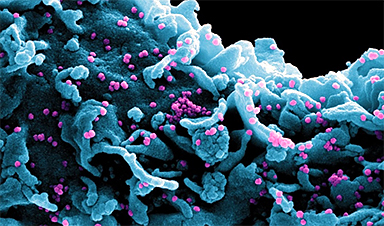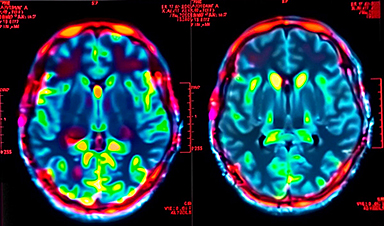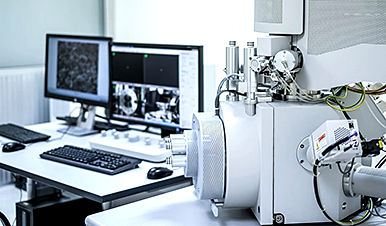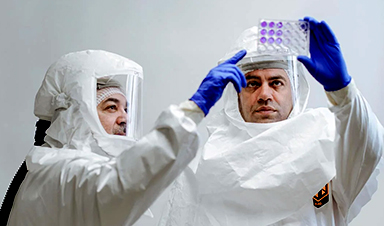Viruses originating from birds and animals are known as zoonotic viruses. When these viruses are transmitted to humans through direct or indirect contact with infected populations, they cause a zoonotic spillover. Approximately 70% of infectious diseases over the last three decades are zoonotic. Because no immediate diagnosis or effective cure is available for the new virus, outbreaks, epidemics, and pandemics are likely to spread rapidly.
Background
Such viruses include Influenza A, Ebola, and three coronaviruses. Coronaviruses (CoV) have caused life-threatening epidemics such as severe acute respiratory syndrome (SARS)-CoV and the Middle East respiratory syndrome (MERS)-CoV in the last five decades. The ongoing COVID-19 (coronavirus disease 2019) pandemic is one such zoonotic virus that has rapidly caused over 211 million infections and over 4.43 million deaths worldwide since December 2019. The severe acute respiratory syndrome virus (SARS-CoV-2), the etiological agent of COVID-19, is a novel coronavirus strain transmitted by mammals.
Viruses and nanoparticles are in a comparable size range. The latter having attractive properties such as small size, large surface-to-volume ratio, susceptibility to modification, and intrinsic viricidal activity. Therefore, scientists functionalize nanoparticles to act against these pathogenic viruses in a clinical strategy. In a recent review published in the journal Microbial Pathogenesis, researchers look at the novel solutions against zoonotic viruses provided by nanotechnology.
Scope and classification of nanomaterials
Nanomaterials are described as ‘materials containing structural nanoelements which considerably improve or cause qualitatively new physical, chemical, biological, mechanical, and other properties.’ Excellent properties like the high surface area to volume ratio, high thermal conductivity, and faster signal transduction make the nanomaterials useful in clinical and biomedical applications. For example, nanomaterials in viral diagnostics have advanced sensitivity, the capability of multiplexing, and cost-effectiveness.
Detection of viruses
Rapid and reliable diagnostics is crucial to defend against any viral outbreak, especially in the case of a highly virulent strain. Conventional molecular diagnostic techniques rely on the amplification of the viral nucleic acids. However, these methods are time-consuming processes with lower specificity and accuracy – nanotechnology can remarkably address the challenges. Immobilizing specific ligands on the nanometric scale, nanotechnology is employed for molecular imaging and profiling in diagnostics.
Nanosensors, for rapid biosensing of virus-associated proteins, are advances in nanotechnology that are widely employed. Nano-sensors are nanoparticle-based devices that can sense signals at a nanoscale comprising three major components; a signal transducer, a receiver, and a detector with a monitoring output. Using these highly sensitive nano-sensors along with other analyzing instruments increases the detection efficiency and also helps deal with the point-of-care type (POCT) pervasive detection systems.
Novel magnetic relaxation nanosensors are used to rapidly detect influenza-associated proteins, adenovirus, and Herpes simplex virus (HSV). Few examples include: multiplex colorimetric paper-based analytical devices using silver nanoparticles can detect MERS-CoV, gold nanoparticles and quantum dots stain for HPV (Human papillomavirus), and chiroimmunosensors can detect infectious bronchitis virus.
News
Does COVID increase the risk of Alzheimer’s disease?
Scientists discover that even mild COVID-19 can alter brain proteins linked to Alzheimer’s disease, potentially increasing dementia risk—raising urgent public health concerns. A recent study published in the journal Nature Medicine investigated whether both mild and [...]
New MRI Study Reveals How Cannabis Alters Brain Activity and Weakens Memory
A massive new study sheds light on how cannabis affects the brain, particularly during cognitive tasks. Researchers analyzed over 1,000 young adults and found that both heavy lifetime use and recent cannabis consumption significantly reduced brain [...]
How to Assess Nanotoxicity: Key Methods and Protocols
With their high surface area and enhanced physicochemical properties, nanomaterials play a critical role in drug delivery, consumer products, and environmental technologies. However, their nanoscale dimensions enable interactions with cellular components in complex and [...]
Nanotech drug delivery shows lasting benefits, reducing need for repeat surgeries
A nanotechnology-based drug delivery system developed at UVA Health to save patients from repeated surgeries has proved to have unexpectedly long-lasting benefits in lab tests – a promising sign for its potential to help human patients. [...]
Scientists Just Found DNA’s Building Blocks in Asteroid Bennu – Could This Explain Life’s Origins?
Japanese scientists detected all five nucleobases — building blocks of DNA and RNA — in samples returned from asteroid Bennu by NASA’s OSIRIS-REx mission. NASA’s OSIRIS-REx mission brought back 121.6 grams of asteroid Bennu, unveiling nitrogen-rich organic matter, including DNA’s essential [...]
AI-Designed Proteins – Unlike Any Found in Nature – Revolutionize Snakebite Treatment
Scientists have pioneered a groundbreaking method to combat snake venom using newly designed proteins, offering hope for more effective, accessible, and affordable antivenom solutions. By utilizing advanced computational techniques and deep learning, this innovative [...]
New nanosystem offers hope for improved diagnosis and treatment of tongue cancer
A pioneering study has unveiled the Au-HN-1 nanosystem, a cutting-edge approach that promises to transform the diagnosis and treatment of tongue squamous cell carcinoma (TSCC). By harnessing gold nanoparticles coupled with the HN-1 peptide, [...]
Global Trust in Science Is Stronger Than Expected – What’s Next?
A landmark global survey conducted across 68 countries has found that public trust in scientists remains robust, with significant support for their active involvement in societal and political matters. The study highlights the public’s [...]
Microplastics in the bloodstream may pose hidden risks to brain health
In a recent study published in the journal Science Advances, researchers investigated the impact of microplastics on blood flow and neurobehavioral functions in mice. Using advanced imaging techniques, they observed that microplastics obstruct cerebral blood [...]
AI Surveillance: New Study Exposes Hidden Risks to Your Privacy
A new mathematical model enhances the evaluation of AI identification risks, offering a scalable solution to balance technological benefits with privacy protection. AI tools are increasingly used to track and monitor people both online [...]
Permafrost Thaw: Unleashing Ancient Pathogens and Greenhouse Gases
Permafrost is a fascinating yet alarming natural phenomenon. It refers to ground that remains frozen for at least two consecutive years. Mostly found in polar regions like Siberia, Alaska, and Canada, permafrost plays a [...]
Frequent social media use tied to higher levels of irritability
A survey led by researchers from the Center for Quantitative Health at Massachusetts General Hospital and Harvard Medical School has analyzed the association between self-reported social media use and irritability among US adults. Frequent [...]
Australian oysters’ blood could hold key to fighting drug-resistant superbugs
Protein found in Sydney rock oysters’ haemolymph can kill bacteria and boost some antibiotics’ effectiveness, scientists discover An antimicrobial protein found in the blood of an Australian oyster could help in the fight against [...]
First U.S. H5N1 Death Sparks Urgency: Scientists Warn Bird Flu Is Mutating Faster Than Expected
A human strain of H5N1 bird flu isolated in Texas shows mutations enabling better replication in human cells and causing more severe disease in mice compared to a bovine strain. While the virus isn’t [...]
AI Breakthrough in Nanotechnology Shatters Limits of Precision
At TU Graz, a pioneering research group is leveraging artificial intelligence to drastically enhance the way nanostructures are constructed. They aim to develop a self-learning AI system that can autonomously position molecules with unprecedented precision, potentially [...]
How Missing Sleep Lets Bad Memories Haunt Your Mind
Research reveals that a lack of sleep can hinder the brain’s ability to suppress unwanted memories and intrusive thoughts, emphasizing the importance of restful sleep for mental health. Sleep deprivation has been found to [...]






















